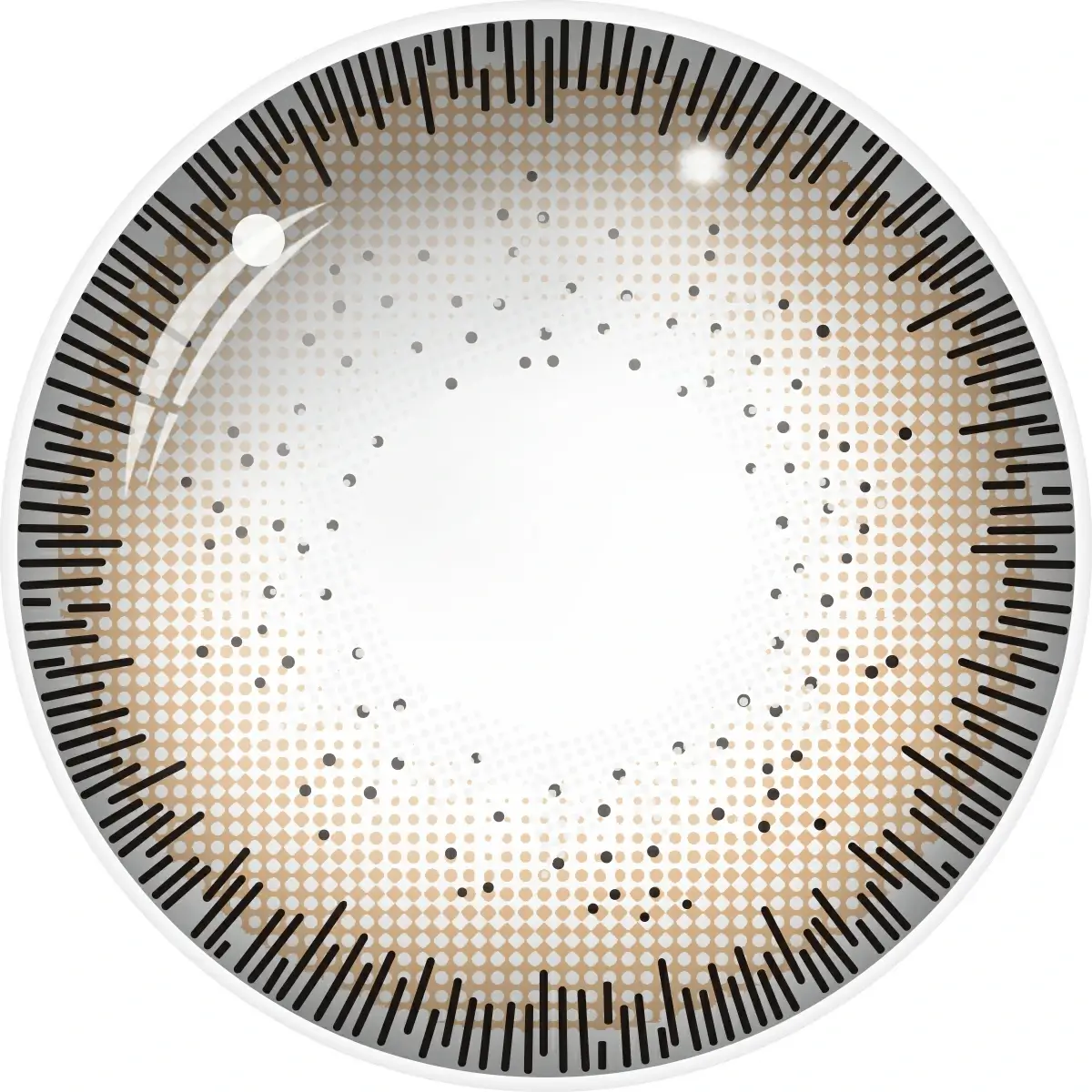The main difference between colored contact lenses and colorless contact lenses lies in their intended purpose and the effects they create when worn.
Here are the differences:
- Colored contact lenses, as the name suggests, are designed to change the color of your eyes. These lenses come in various shades, patterns, and designs, allowing you to achieve a different eye color or enhance your natural eye color. Colored contact lenses can be used for cosmetic purposes, theatrical performances, fashion, or simply to experiment with different looks. They are available in both prescription and non-prescription options, catering to individuals with or without vision correction needs.
- Colorless contact lenses, also known as clear or transparent contact lenses, don’t alter the color of your eyes. These lenses serve primarily for vision correction purposes, providing a clear and unobstructed view. They are used to correct refractive errors such as nearsightedness (myopia), farsightedness (hyperopia), astigmatism, or presbyopia. Colorless contact lenses are typically prescribed by an eye care professional and are available in various types, including daily disposable, monthly or bi-weekly replacement lenses, and specialized lenses for specific eye conditions.
It’s important to note that some colorless contact lenses may have a slight tint or visibility tint, which is usually a light blue or green color. This tint is added to make the lenses more visible during handling and insertion but does not affect the color of your eyes when worn.
In summary, colored contact lenses fast shipping are specifically designed to change or enhance the color of your eyes, while colorless contact lenses are primarily used for vision correction without any color-altering effects.
Here’s some additional information about colored contact lenses and colorless contact lenses:
Colored Contact Lenses:
- Types of Colored Contact Lenses: Colored contact lenses are available in various types, including opaque, enhancement, and theatrical lenses. Opaque lenses completely change the color of your eyes, even if you have dark-colored eyes. Enhancement lenses enhance the natural color of your eyes, making them appear more vibrant or defined. Theatrical lenses are often used for special effects or costume purposes, featuring unique designs or patterns.
- Coverage and Visibility: Opaque colored contact lenses are designed to completely cover the natural color of your eyes, providing a noticeable change in eye color. Enhancement lenses, on the other hand, are more translucent and allow some of your natural eye color to show through, resulting in a subtle enhancement.
- Prescription Options: Colored contact lenses are available in both prescription and non-prescription (plano) options. If you have a vision prescription, you can typically find colored contact lenses that correct your refractive errors while providing the desired color change. It’s important to have a proper eye examination and get a prescription from an eye care professional before wearing any contact lenses, including colored ones.
- Duration of Wear: Colored contact lenses are available as daily disposable, monthly, or yearly replacement lenses. The duration of wear depends on the specific type of lenses you choose. Daily disposable lenses are discarded after each use, while monthly or yearly replacement lenses require regular cleaning and storage according to the manufacturer’s guidelines.
Colorless Contact Lenses:
- Vision Correction: Colorless contact lenses, also known as clear or transparent contact lenses, are primarily used for vision correction. They are prescribed to correct refractive errors such as nearsightedness, farsightedness, astigmatism, or presbyopia. These lenses provide clear, unobstructed vision without altering the natural color of your eyes.
- Prescription Options: Colorless contact lenses are available in a wide range of prescription options to address different visual needs. An eye care professional will determine the appropriate prescription based on your eye examination and vision requirements.
- Lens Materials: Colorless contact lenses are typically made from various materials, including soft hydrogel or silicone hydrogel. These materials provide comfort, breathability, and compatibility with the eyes.
- Replacement Schedules: Colorless contact lenses come in different replacement schedules, such as daily disposable, monthly, or extended wear options. The replacement schedule depends on the specific lens type and the recommendation of your eye care professional.
Remember, regardless of whether you choose colored or colorless contact lenses, it is crucial to follow proper hygiene practices, adhere to the recommended wearing schedule, and consult with an eye care professional for a comprehensive eye examination and prescription. They can guide you on the suitable contact lenses for your specific needs and provide instructions on proper lens care and maintenance.
